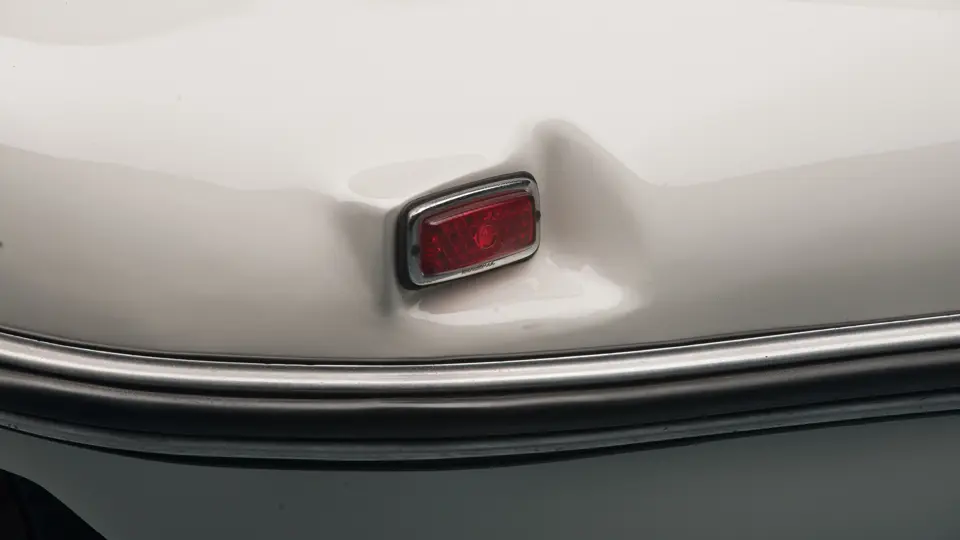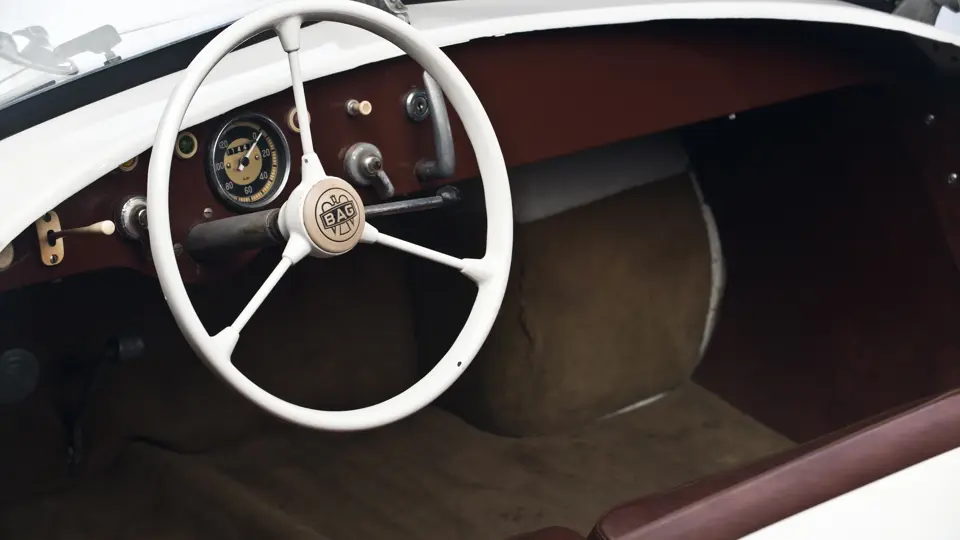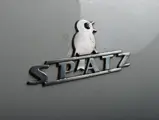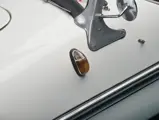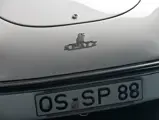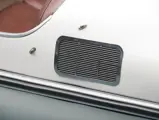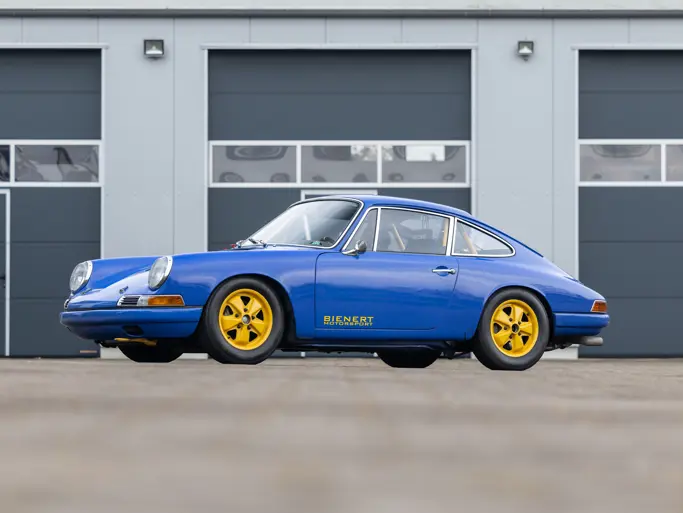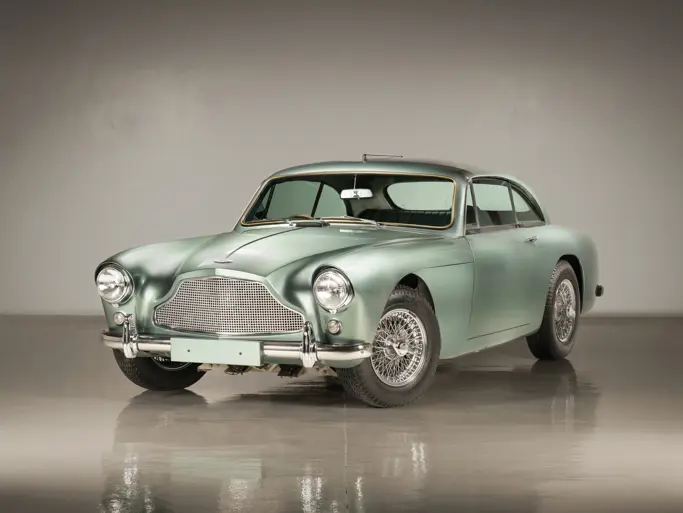Original and complete to the smallest detail.
SPECIFICATIONS
Manufacturer: Bayerische Autowerke GmbH
Origin: Nürnberg, Germany
Production: 859
Motor: Fichtel & Sachs 1-cyl, 2-stroke
Displacement: 191 cc
Power: 9.5 hp
Length: 10 ft. 10 in.
Identification No. 00236
Harald Friedrich, the co-owner of machine tool manufacturer Alzmetall, was thinking of expanding his tooling in the direction of presses for the new plastics materials. He had met the colorful Egon Brütsch at the Paris Salon, who impressed on him that plastics were indeed the future. Brütsch delivered a car and a set of plans, and Friedrich couldn’t believe his luck that not only was he now making auto parts, but he was completing vehicles. He entered into a license agreement in December 1954.
In the spring, Friedrich was able to thoroughly test drive his Brütsch 200, called Spatz (Sparrow), on rough country roads, and he soon discovered that the fiberglass developed serious cracks at the suspension mounting points, which rendered the car completely unsalable—and Brütsch wasn’t answering his phone.
He commissioned the legendary 77-year-old Professor Dr. Hans Ledwinka to make a proper automobile out of the Spatz. Ledwinka had designed Tatras and had played a leading role in the development of the Volkswagen, so he created a superb backbone frame characteristic of the Tatra’s with a suspension like the Beetle’s. Moving to four wheels was not so difficult a conversion, and so evolved the Spatz. Hydraulic brakes were a given, and the motor sat ahead of the wheels, making it a well-balanced mid-engine car. Free, unobstructed headlamps were acceptable in more countries, and the now split-windshield acquired a sturdy frame for better sealing with the top.
Friedrich knew the Sachs motor was marginal, but a replacement was unavailable, as BMW’s Isetta motor was not for sale. He formed the Spatz-Fahrzeugbau to build the cars, and he also found time to build presses that cured the body shells in seven minutes instead of 24 hours. The problem of a dealer network was solved in July 1956 by a partnership agreement with motorcycle manufacturers Victoria in Nürnberg. The new company was called B.A.G. (Bavarian Auto Works).
The honeymoon was brief, as a car being tested by a magazine had an engine fire and Egon Brütsch was prepared to go to court regarding license fees for “his” car. Friedrich, after sleepless nights, decided within a few weeks to leave the partnership. This original-condition example came from Germany and is complete in all details, from the cast-aluminum rear license plate bracket through to the rare blinker lights and the delightful nose badge featuring a singing sparrow.




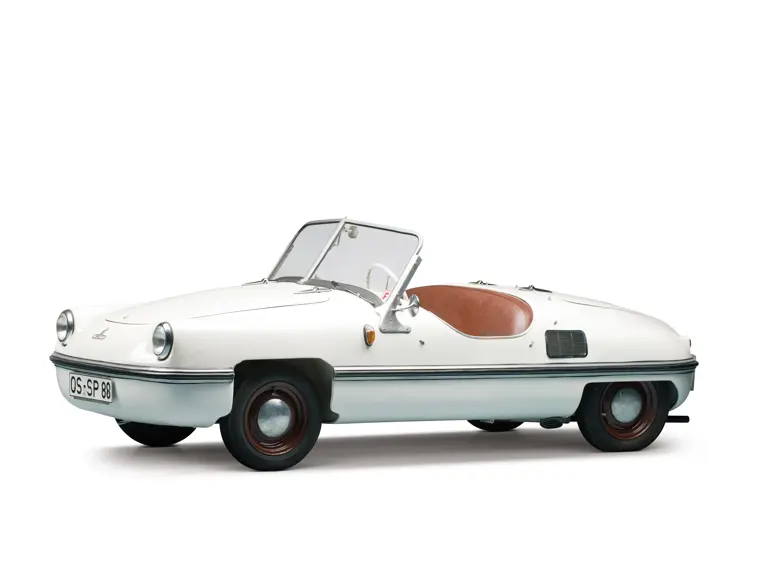


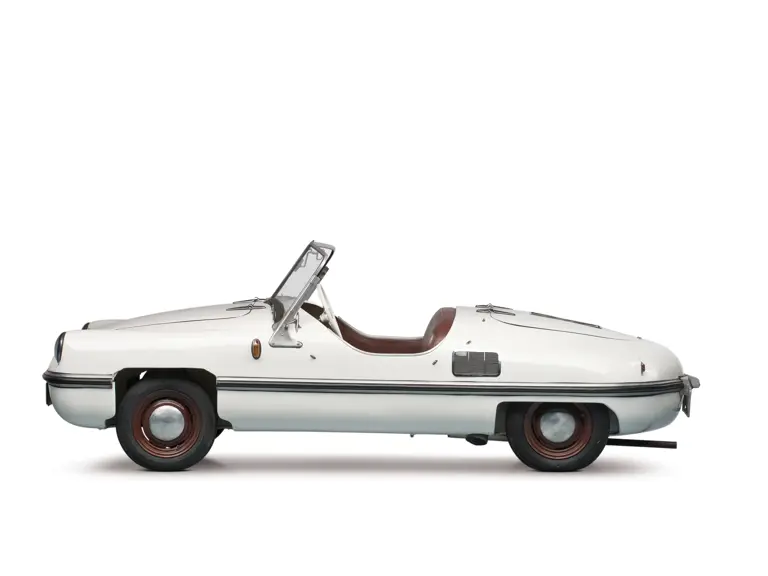
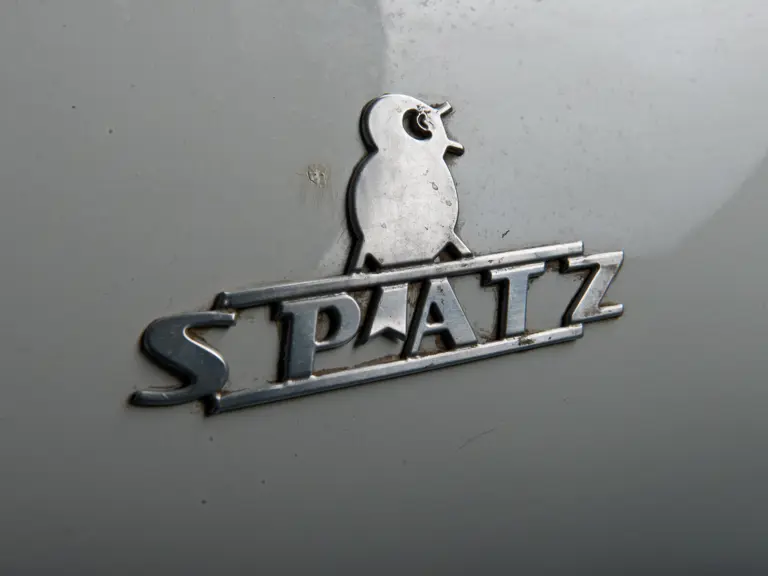


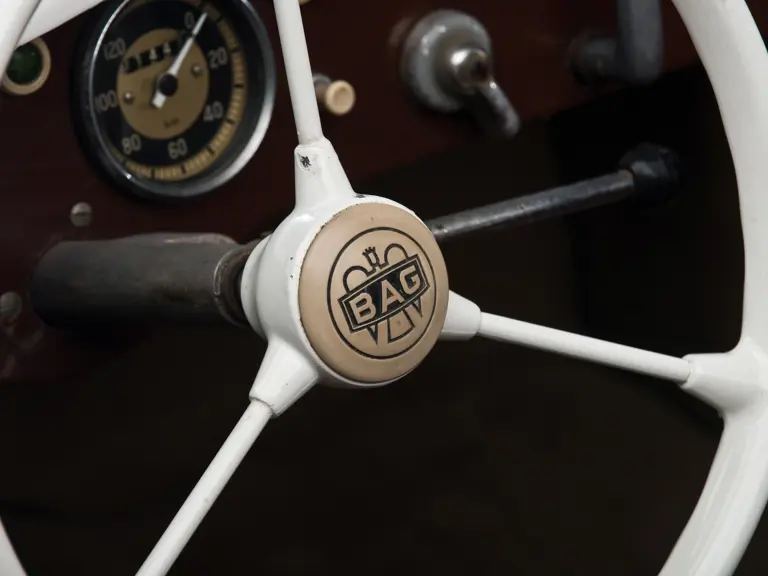


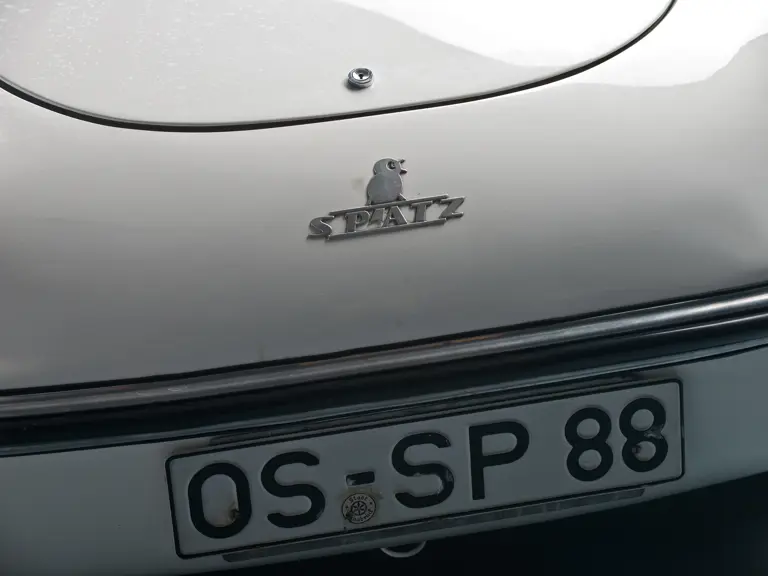
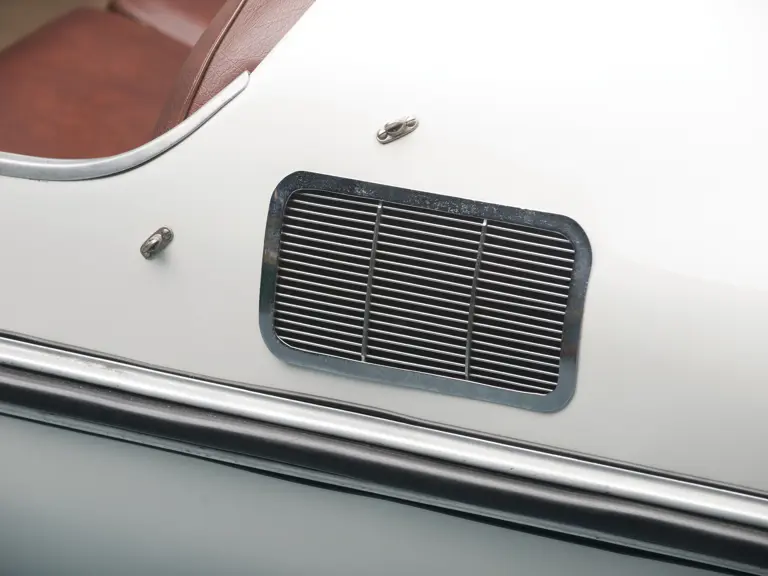
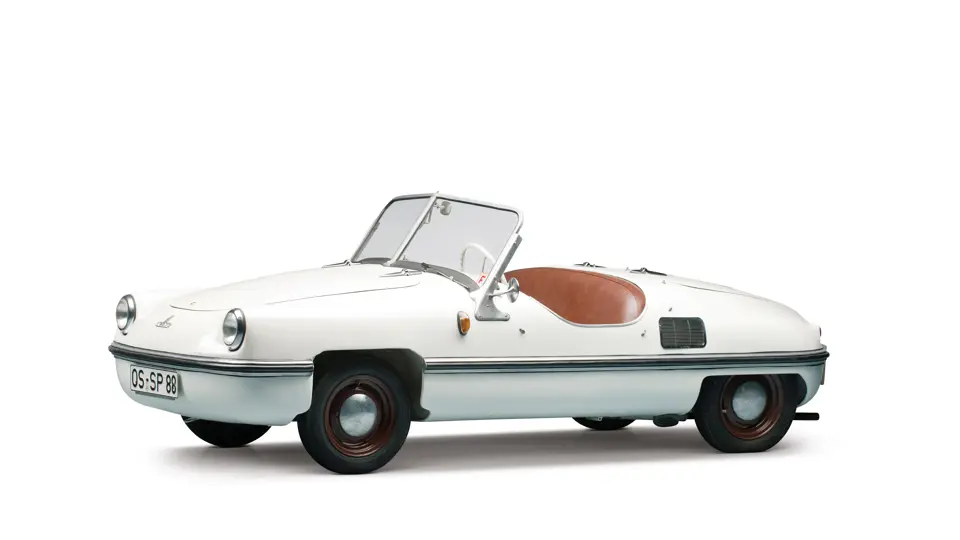
 | Madison, Georgia
| Madison, Georgia

